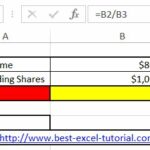Leveraged Return in Excel: Calculate ROI Using Debt Financing
A leveraged return measures how debt affects your investment profits. When you borrow money to invest, the returns on your equity can be much higher. This is the core of financial leverage. Learn to calculate leveraged return in Excel to understand how borrowing impacts your portfolio returns.
What Is Leveraged Return?
Leverage means using borrowed money to invest. A leveraged return shows how this debt amplifies (or reduces) your returns. It compares the profit on your equity to your actual equity investment.
Here’s why it matters: if your investments earn 15%, but you borrowed at only 5%, you profit from the difference. The extra gains go to you as the equity holder. This amplification is leverage.
The Basic Example
Let’s use a simple scenario:
- You want to buy an asset for $100,000
- You invest your own money: $40,000
- You borrow: $60,000 at 5% annual interest
- The asset returns 15% in one year
- Total gain: $15,000 ($100,000 × 0.15)
Now calculate the cost of your debt:
Interest cost: $60,000 × 0.05 = $3,000
Your net gain is:
$15,000 – $3,000 = $12,000
Your return on equity:
$12,000 ÷ $40,000 = 30%
Notice: The asset returned 15%, but your equity return is 30%. That’s leverage at work.
Setting Up Your Excel Spreadsheet
Organize your data in cells:
| Item | Cell | Value |
|——|——|——-|
| Initial investment | A1 | 100000 |
| Amount borrowed | A2 | 60000 |
| Interest rate | A3 | 0.05 |
| Investment return | A4 | 0.15 |
Calculating Step by Step
Step 1: Calculate interest cost
In cell B1, enter: =A2*A3
This gives you: $60,000 × 0.05 = $3,000
Step 2: Calculate total dollar return
In cell B2, enter: =A1*A4
This gives you: $100,000 × 0.15 = $15,000
Step 3: Calculate net return
In cell B3, enter: =B2-B1
This gives you: $15,000 – $3,000 = $12,000
Step 4: Calculate your equity investment
In cell B4, enter: =A1-A2
This gives you: $100,000 – $60,000 = $40,000
Step 5: Calculate leveraged return
In cell B5, enter: =(A1A4-(A2A3))/(A1-A2)
This gives you: $12,000 ÷ $40,000 = 0.30 (or 30%)
Understanding the Results
Your leveraged return is 30%. This is higher than the 15% investment return. Why? Because you borrowed at 5% but earned 15%. The 10% difference boosted your equity returns.
This is the power of positive leverage. Your borrowed capital worked in your favor.
The Risk Side
Leverage amplifies both gains and losses. If the asset had returned only 3%, your equity return would be negative. The debt cost (5%) would exceed your investment return (3%), creating a loss.
This is why leverage is risky. Use it carefully and understand your investment thoroughly before borrowing.


